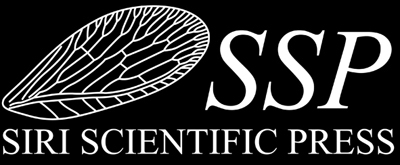What is a species and can we really define it?
Posted by David Penney on
Yesterday, October 5th, was a landmark day in terms of animal taxonomy (the science of naming naming species), because the first ever new insect species to be described and named, based solely on photographs of the organism concerned, was published in the journal ZooKeys. However, it is causing plenty of controversy.

The new species Marleyimyia xylocopae from Ndumo Game Preserve, South Africa
The traditional approach to naming new species (fossil or extant) requires that a 'type specimen' be deposited in a museum collection in order to serve as a physical reference point for future purposes. In the current study no such specimens exist. Hence, if similar but slightly different specimens are found it will be impossible to do additional analysis (e.g. morphological examination or DNA analysis) to determine whether or not they are actually the same species or whether they represent something new. Not surprisingly, there is already a lot of discussion on social networks about how useful this new approach actually is, or potentially can be. Time will tell.
A more interesting question perhaps is: What really constitutes a biological species and can we truly define them?
In order to address this we need a philosophical approach. We need to consider whether taxonomic categories can be considered as real entities. The relation between the human mind and the outside world requires some kind of correspondence and symmetry. It is impossible to explain the nature and organization of this relationship, but it does exist. The complete independence of the consciousness and the world is not possible. This means that even the wildest fantasies have some correspondence to the real world. Nature, as perceived by the human mind, is as far from being absolutely real as from absolutely unreal. The reality of any phenomenon and all human ideas about it lie somewhere between 0% and 100% and never occupy these extreme positions. Our world is full of entities, whose reality is based on various principles and criteria. This complexity of reality is apparent when we discuss the reality of biological taxa.
The basic constructs of biology were, are, and always will be, those of organism and species. However, even today, biologists are unable to provide precise definitions for these constructs. The history of science suggests that its major achievements have been connected with the development of new universal concepts. It happened with physics, when Sir Isaac Newton proposed his definition of gravity; or, when Albert Einstein proposed his definition of space. The science of biology is still lacking such universal concepts that define its fundamental elements: organism and species. The future of biology depends on how we view systematics and how we address its basic questions. What is a species? Do current taxonomic categories (including those of paleontology) represent real entities or are they just conventional constructs of our mind? Is our world lawfully organized and if so, how do we determine the natural law of its organization? These are eternal scientific questions and biologists will return to them again and again to give science a new vision and a new spin.
The above is paraphrased from our recent title: Nomosystematics: A closer look at the theoretical foundation of biological classification by Boris P. Zakharov, which was listed in the top 10 Biology Teaching Academic Philosophy books in the following blog: http://bioteaching.wordpress.com/2013/10/29/2013-shopping-academic-philosophy-books/.
Click the cover to go to the product page
Link to the open access article describing the new fly species (and the credit for the fly photo used in this blog): Marshall SA, Evenhuis NL (2015) New species without dead bodies: a case for photo-based descriptions, illustrated by a striking new species of Marleyimyia Hesse (Diptera, Bombyliidae) from South Africa. ZooKeys 525: 117-127. DOI: 10.3897/zookeys.525.6143
Read more at: http://phys.org/news/2015-10-species-dead-bodies-insect-description.html#jCp
Share this post
- 2 comments
- Tags: New research, News
2 comments


Yep, missed out the word ‘insect’ which has now been added to the original post. Besides, Torben Larsen erected a new species of butterfly from a photo, which was subsequently synonymized, so in reality it is not even the first insect to be named in such a manner. Regardless, the purpose of the blog was as a not-so-subtle lead in to a book that addresses deeper thinking about the concept of what a species is and whether we can actually truly come to a ‘real’ definition of it.
Not the first at all. This has been going on for a number of years (read the paper!). This is just the first insect to be published in this fashion.